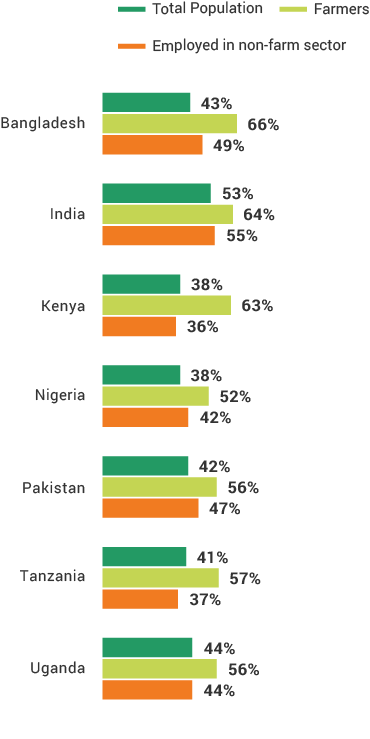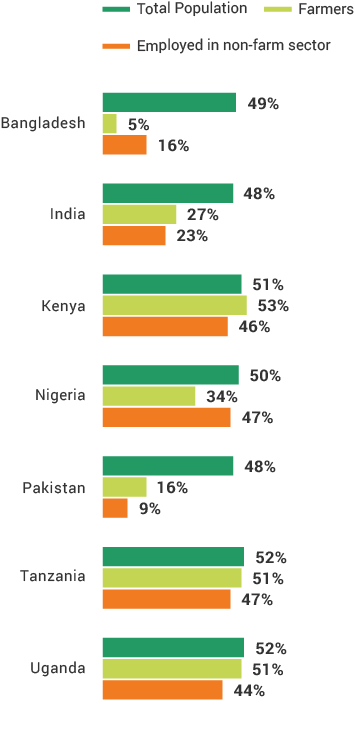Agriculture is the bedrock of the economy for many of our FII countries, contributing heavily to GDP and employing sizable populations of people. Agricultural workers tend to be poorer, less financially included, and older compared to workers in other sectors and the population as a whole. Uganda and Tanzania lead in the agriculture sector with 61% and 53% of the population, respectively, working in the farming industry.
In every FII country, farmers are more likely than the overall population to fall below the poverty line and tend to fare worse than adults in non-farming jobs. Those working in agriculture are less likely to be financially included compared with those who hold jobs in other sectors. However, in India, Kenya, and Pakistan, farmers are as likely to be financially included as the rest of the population. Agricultural workers in each of the FII countries are older, on average, than all adults and those with jobs outside of farming.
Farmers By Country
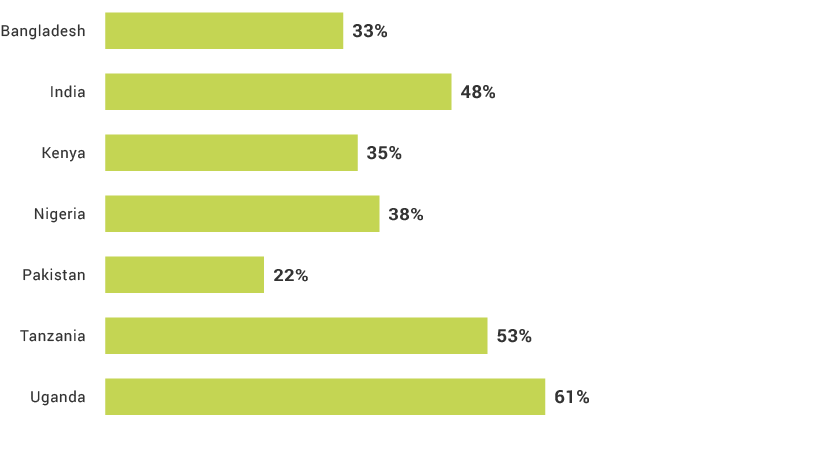
Agriculture, Financial Inclusion and Poverty
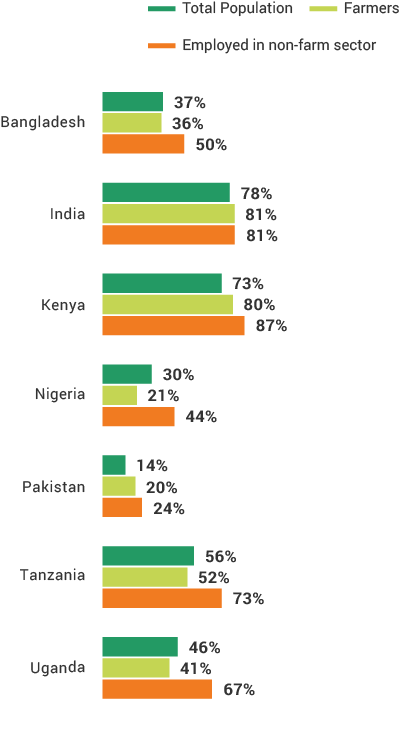
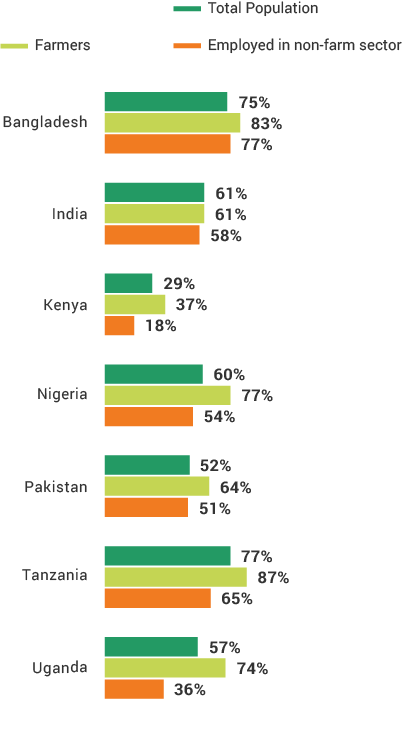
Agriculture, Age and Gender
